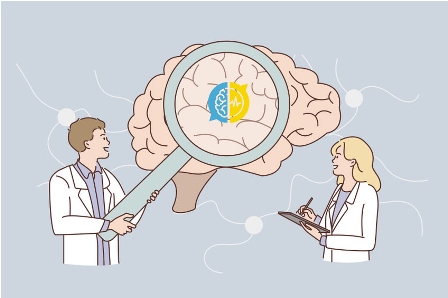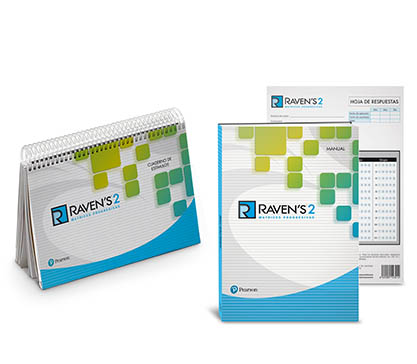
What is neuropsychology translation (and other questions)?
Neuroscience is one of today's hot topics. Every day, it seems there's a new development or invention in the discipline. There's certainly a lot of truth when people say the brain is “the final frontier.”
One of the branches of neuroscience is neuropsychology. Sounds exciting? It is! But probably not in the way people imagine it to be. Like many other specialties and subspecialties, the day-to-day practice of a neuropsychologist can remain a mystery for people outside the field (even other psychologists).
In this post, I'd like to touch on neuropsychology as a translation specialism. In a later post, I'll go into more detail about the ways a specialized translator can help test designers, test publishers, CROs, and authors in their validation efforts.
What makes neuropsychology different from other fields?

There are some things that make neuropsychology different from other psychology settings, which impacts the type of translations a neuropsychology translator will do.
The day-to-day of the clinical neuropsychologist is not even remotely similar to the “patient on divan and psychologist listening” image that probably pops into most people's minds. In fact, a neuropsychologist's day is usually filled with assessment appointments, report writing, or cognitive rehab activities (all of which involve multiple steps and processes).
Neuropsychology assessment and tests
The instruments we use to measure processes are different from what most people probably think about, that is questionnaires (personality inventories, achievement tests, etc.) or similar. Of course, neuropsychologists also use scales, structured and semi-structured interviews, and questionnaires for assessment. But our instruments can look completely different, as we need to test the performance of the person through different conditions; some are somewhat natural (e.g., describing a scene) and others less so (e.g., learning “random” words).
But what about language? In general, psychologists are very interested in how culture and language influence measurement. Specifically, as neuropsychologists, we are very aware of the impact of language and culture on our tests and we have a specific field of study called cross-cultural neuropsychology.
Why and what to translate in neuropsychology?

There are several situations in which someone might need to translate neuropsychological tests to another language. These include (but are not limited to):
Clinical research: These include multisite clinical trials or decentralized clinical trials with cognitive outcomes. They involve patients from different regions and may require adaptations in several languages for clinical outcome assessments. They can be anything from the more “classical” patient-reported outcomes (PROs) to clinician-reported outcomes (ClinROs), observer-reported outcomes (ObsROs), and performance outcomes (PerfOs).
Fairness: Today, there are efforts to avoid language and culture (rather than the construct to be measured) being the main differentiator between test takers. To this end, translated tests might be offered as one of many test accommodations. Access to previously adapted and validated tests in other languages is better than relying on test administrators for impromptu interpretations, which can have unpredictable effects.
Academia: Contributing and sharing with the international scientific community might be a strong motivator for researchers and university groups to adapt an existing measure to their context and share their findings with the world.
What can be translated?
Content to be translated depends on the type of measure and the complexity of the administration and materials. In general, it includes:
- Test stimulus material: stimulus booklets and other stimulus material.
- Manuals/instructions for test administrators: administration and technical manuals, record forms, scoring sheets.
(Both types of content include material to be used by test administrators and test takers).
- Academic material: abstracts, posters, papers, presentations, etc.; all related to the research.
- Editorial/literary material: popularization books, student manuals, specialized books.
What could go wrong?
Some people know their discipline so well that it's sometimes difficult to imagine how things can go wrong, but little errors can all add up, and having an appropriate adaptation process that doesn't include specialized linguists can have consequences.
The ISOQOL Translation and Cultural Adaptation Special Interest Group issued the following warning about test materials (stimuli and rater/patient instructions) for performance assessment on clinical trials (which include cognitive assessments):
For constraints of timelines or budget, this material is often neglected, poorly translated, or even not translated at all due to the assumption that clinicians and site personnel are sufficiently fluent in English. Expecting clinicians and site personnel to use English forms and instruction manuals can dramatically result in bias or incorrect interpretations of the measure content that threaten the validity of the data.
Small errors that add up
I was involved in the English-to-Spanish adaptation of a neuropsychology battery for the assessment of executive functions for a clinical trial.
In the translation of the administration manual, the meaning of “easel position” was misunderstood and the term was mistranslated. The translator thought it referred to a painting task and translated accordingly. But it actually referred to the position of a stimulus book that opens in such a way that it can stay upright and face the patient when flipping the pages.

On the left, an example of a stimulus book in easel position (Source: Pearson Clinical)
This completely changed the meaning of the instruction. If it had passed unnoticed, it might have affected what the different test administrators understood, leaving the door wide open for interpretations that could lead to variability in administration.
Conclusion
Neuropsychology is a highly specialized scientific subfield but also a highly specialized linguistic subfield. If you don't have a linguistic background, you might not know that translators specialize in specific areas (popular fields are medical, legal, technical, and marketing), and psychology translation is one of the subfields that requires a specialized approach.
I hope, by now, you're convinced that neuropsychology is not only a specialization within psychology but also within translation.
I really believe this understanding will help in your search for the right partners. Incorporating a neuropsychology translator or specialized linguist into your validation process will help you avoid errors that others might not detect, but that can add up.
If you want to know exactly how translators specializing in neuropsychology can help you, don't miss my next post!

is a psychologist and English to Spanish translator. She specializes in the fields of psychology, healthcare and medicine, and education. In this blog, she writes about everything she knows or has learned that could be useful or of interest to you!